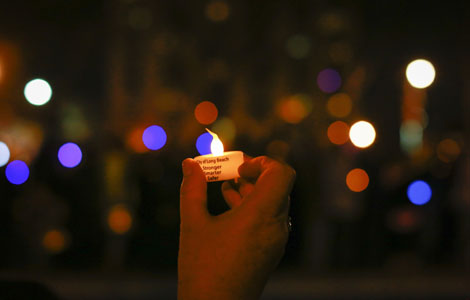Halloween gaining popularity but still sees cultural differences
Updated: 2013-10-30 23:55
By Wu Ni in Shanghai (China Daily)
|
||||||||
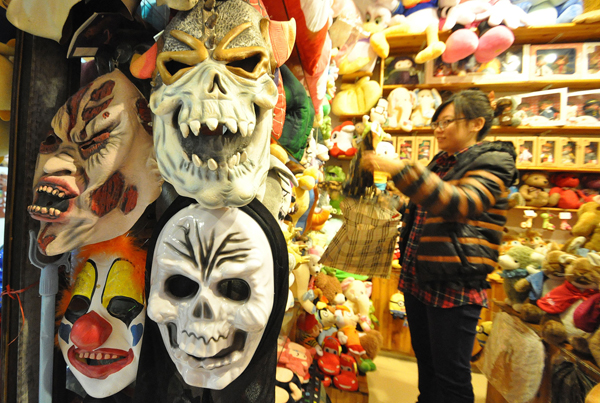 |
|
Masks, costumes and other Halloween-related merchandise are displayed at a store in Handan, Hebei province, on Wednesday, the day before the celebration. Halloween has become more popular in China, but some of its scarier masks and costumes cause concern that they may affect children negatively. He Qunying / For China Daily |
Halloween has gained increasing popularity among China's youngest generation, with many kindergartens holding Halloween parties, but complaints from parents and cases of frightened, crying children are also being heard.
Wang Dan, a mother from Zhengzhou in Henan province, said she felt awkward trying to make a pumpkin lantern for her daughter. She tried using rags, straws and even an LED light tube but none succeeded.
"After spending 1.5 hours on the pumpkin, I was exhausted and just painted some color on it," she said, adding that although the kindergarten asked parents to make a lantern with their children, her 3-year-old could do little to help.
It was the first time Wang's daughter has attended a Halloween party. Days before the festival, the school summoned parents for a meeting, teaching them to make pumpkin lanterns and asking them to make children's costumes by hand.
The parents also helped decorate the classroom with spiders, cobwebs and witches. "My daughter was not afraid of that, but I heard that some timid children were scared and had nightmares," Wang said.
Cao Yanmei, a mother in Shanghai, was unhappy when she received a message from her son's teachers asking her to prepare a Halloween costume for her 3-year-old.
"At first I thought it was not suitable for the kindergarten to expose children to things that aren't peaceful or friendly, like ghosts or evil spirits, but I changed my mind quickly, as this is also a chance for him to learn different cultures and customs," she said.
Cao avoided terrifying elements when she prepared the costume. She chose a pumpkin mask, which she said was more neutral than a bloody mask, and an eye patch and cloak, rather than the popular witch's hat.
To parents who are unwilling to put time and effort into making a costume, Taobao.com, China's largest online marketplace, is an easier option. Han Jing, a mother from Nanjing, the capital of Jiangsu province, just clicked her computer mouse and spent 60 yuan ($9.60) to buy a pirate costume from an online store on the site. "I think the kindergarten wants to promote parent-child time in the name of Halloween," she said.
Cultural differences
Shen Ying, chief of the research section of Haoertong Kindergarten in Shanghai Pudong New Area, said the kindergarten never holds Halloween events but pays more attention to traditional Chinese festivals, such as the Chongyang festival that pays respect to the elderly.
Shen said some private kindergartens with foreign teachers tend to celebrate Western festivals.
Ivy Schools in Beijing has held Halloween parties since 2008, said Li Yanni, the assistant campus director.
Nearly half of the children at the bilingual kindergarten are from other countries and they celebrate both Chinese and Western festivals.
Last Halloween, teachers and parents built a haunted house, which scared some girls, causing them to cry. Children were also encouraged to shout "trick-or-treat" at shops in the nearby community.
"Children from Western countries are more excited and wear spooky costumes, while Chinese children dress as cartoon figures. Generally, I think it is more like a costume ball," she said.
Li Yan, a professor of preschool education from Shanghai Normal University, is supportive of the event.
"A Halloween party is a good chance for children to learn about a foreign festival and different customs and in the process they can learn to understand and respect other cultures and, furthermore, to accept cultural diversity," she said.
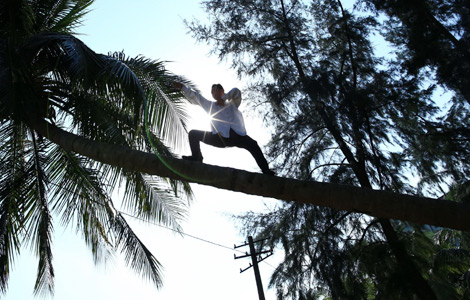
 Kung fu master becomes hit online
Kung fu master becomes hit online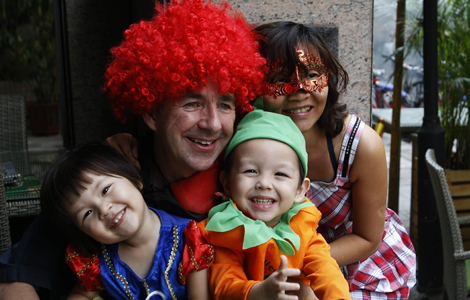
 Color-blind love
Color-blind love
 Lenovo's new secret weapon: Hollywood star
Lenovo's new secret weapon: Hollywood star
 Brussels visit heralds closer trade ties for EU and China
Brussels visit heralds closer trade ties for EU and China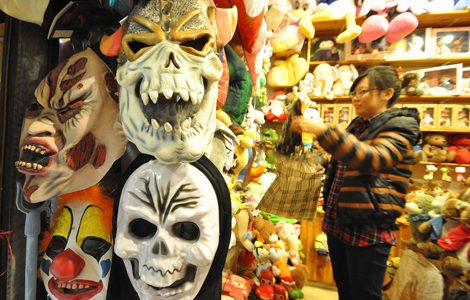
 Halloween gaining popularity but still sees cultural differences
Halloween gaining popularity but still sees cultural differences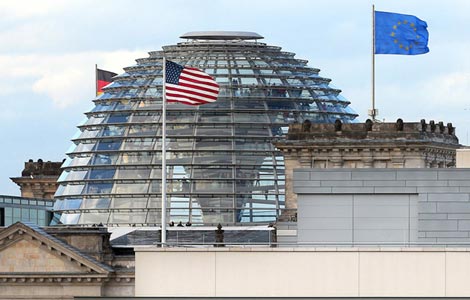
 US embassy accused as 'spy hub'
US embassy accused as 'spy hub'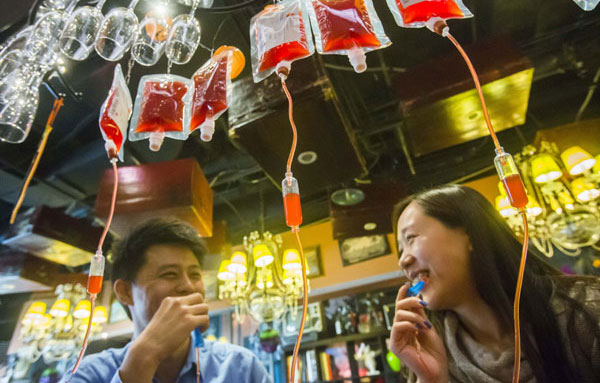
 Halloween beverage offers vampire experience
Halloween beverage offers vampire experience
 Lenovo launches new Yoga tablet
Lenovo launches new Yoga tablet
Most Viewed
Editor's Picks
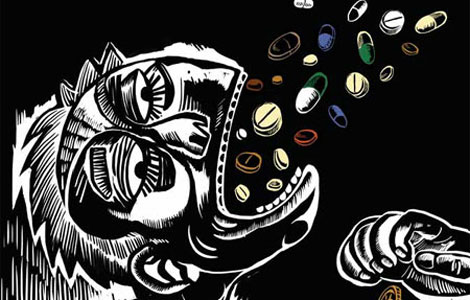
|
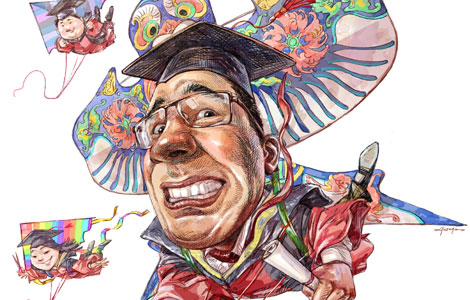
|

|

|

|

|
Today's Top News
US business asks easing of market barriers
Benefit held for NYC official's ex-campaign treasurer
HIV epidemic needs education, not bath house bans
Tian'anmen jeep crash a terror attack
US spied on Chinese cities: report
Legislation to help reduce pollution
Survey examines education gap
Govt pledges more housing
US Weekly

|

|


